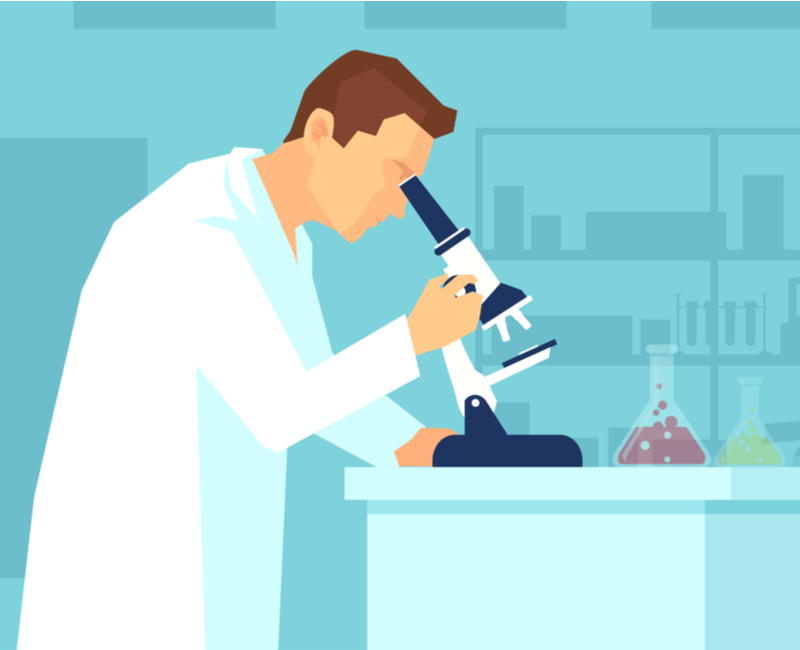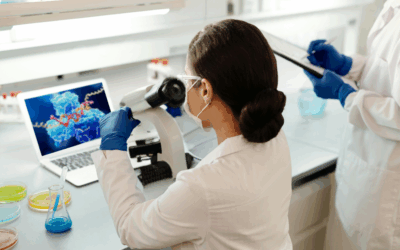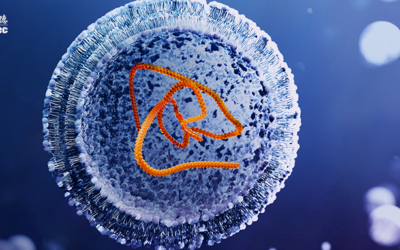Pathologists examine the causes and mechanisms of diseases and, in the world of drug development, that means collecting, processing and analyzing tissue for toxicity. Histotechnologists fix tissue samples onto slides, stain them to distinguish types of cells and cell structures, and then pathologists interpret them for inclusion into a final study report.
Pathologists play an instrumental role in identifying areas where further development is needed and ultimately shepherding new drugs to market. After toxicology studies, pathology is the final analysis before submitting an application to a regulatory agency. Early-stage, exploratory studies can benefit from pathology when assessing issues and mitigating risks prior to investing resources into Investigation New Drug (IND)-enabling studies. These studies tend to be comprehensive, so identifying risks therapeutics may pose early on is important to maintaining an efficient process.
“We’re looking for abnormal morphology of tissue cells and structures,” says Xixing Zhao, executive director and head of pathology at WuXi AppTec. “We want to see where tissue damage and functional changes occur. That’s how we predict the human risk.”
Given that pathologists help determine how a specific program will progress through IND submission, developers can save time and money by understanding how and when to utilize their expertise.
Early-Stage Pathology Can Deliver Long-Term Results
Early-stage pathology—i.e., pre-ADME testing—is not required by any current regulatory standards, but pathology experts recommend doing so. In the early stages, pathologists use exploratory toxicology studies to determine the approximate maximum tolerated dosage at which animals can tolerate, and which they then use to discover the potential risks for human exposure.
Large-scale testing can be costly and consume significant resources, but early-stage pathology can help developers use fewer in vivo testing systems and materials. These assessments can also significantly reduce long-term costs by identifying tissue or organ system effects that could derail a program at a later stage. Early assessment of potential toxicities can also build confidence in your compound and your program design.
“Everyone wants to get to clinical testing,” Zhao says. “Most of the time, the drugs that go this far (in the IND submission process) do so because they’ve been evaluated in the very early stages where many lead candidates fail due to toxicities.”
Non-clinical Studies Help Identify Your Compound’s Risk Level
In a typical repeated-dose four week GLP-compliant study, pathologists compare any findings in treated groups versus control group data, to identify potential test article related changes in tissues. Zhao points out that not all macroscopic and microscopic changes are considered adverse; some are related to species, route of administration, vehicle and/or excipient formulations, among other causes.
Determining histomorphologic changes in animals from the treated groups should be clearly stated as to their biological and toxicologic significance, as well as the potential reversibility of the findings. Identifying potential toxicity early in the drug development program minimizes human risk, saves time, money, and allows a client to implement better risk management and focus on solutions.
What to Look For In Your Pathologist
Drug developers assessing different laboratory testing partners should, at a minimum, focus on two variables. The first is their level of qualification and whether they are professionally trained and certified by the American College of Veterinary Pathologists (ACVP) or other equivalent organizations such as the European College of Veterinary Pathologists (ECVP). The other variable to look for in a pathologist is expertise in safety assessment studies using the subject species. That means finding a laboratory testing partner that has conducted the type of studies you want to run and worked on similar programs or therapeutic areas.
“If developers are working on an oncology drug, for example, they’ll want to know the type of modalities we’ve worked on in that area,” Zhao explains. “If they do respiratory toxicology, they may want to know if we’ve worked on inhalation studies. Or, if they do reproductive toxicity, they will want to see that we’re reproductive system experts.”
Pathology Challenges
One of the biggest challenges facing drug developers is understanding the toxicologic significance of test article-related findings. The tissues affected, combined with possible alterations in other study endpoints (such as clinical pathology, the magnitude of systemic drug exposure, and possible clinical observations) and the determination of reversibility, help drug developers make informed decisions about the fate of a potential therapeutic. A laboratory testing partner should provide a clear, integrated, and concise report to facilitate your IND application while maintaining open communication lines with project teams.
Larger drug developers often have in-house pathologists that provide a primary reading of the findings or work with the laboratory testing partner to create a peer-reviewed evaluation of pathology findings. Smaller developers or those who do not employ staff pathologists will usually consult third-party toxicologists to review the data and present a second set of conclusions if unexpected findings occur. In both instances, the laboratory testing partner’s Study Director should be available to maintain an open communication channel.
“Clients want to be confident that the findings are understood and that all of the different pathologists involved concur,” Zhao says. “Pathologists take their roles and responsibilities seriously and want safe drug candidates to advance in their IND application.”
Strategies for Pathology Success
High toxicity or incongruent study results can present barriers that slow down or derail a drug development program. That said, there are a few things drug developers can do to better prepare for timely pathological assessments and maximize the chances for success.
A successful drug development effort begins with sharing as much information as possible with the chosen drug development partner. “We don’t need developers to disclose any proprietary information, but knowing the therapeutic application or the mechanism of action is valuable,” Zhao says. “This information will help us create a final report where the potential findings and assessment of their impact provide better safety predictions for humans.”
Next, be cognizant of timelines. There is a potential conflict between project teams on a tight deadline and pathologists that may need more than the allotted time to complete their assessments. “Sometimes (pathologists) need a couple more days,” Zhao says. “That might allow them to think clearly about the story and provide a sounder explanation of their findings.” Both parties should be clear about their goals and expectations, maintain regular communications, and actively manage the program milestones to have a successful outcome. A collaborative approach, balancing conflicting priorities, will always yield higher-quality results.
Finally, if a pathologist identifies adverse findings, a bit of extra leg work can speed things up considerably. In many instances, tissue samples from the control and high-dose groups are submitted for histopathologic evaluation. However, if there is an identified tissue related toxicity, the pathologist will need to evaluate the low- and mid-dose groups to determine the no-adverse-effect-level (NOAEL). The study’s size (i.e., the number of animals and associated tissues) will determine how much extra time is required to issue the pathology report. It’s always best to consider the risk/benefit analysis for preparing all tissues from all groups, saving time and minimizing the impact on the reporting timelines.
The Bottom Line
Early pathology assessments can be critical to the drug safety assessment process by decreasing failures in late-stage development through early identification of potential human risks. It is also an opportunity for drug developers to avoid costly development failures later in the IND process by managing time and resources more effectively and be more proactive in identifying lead candidates in the drug discovery process. Understanding the critical role pathology has in drug development and what to expect in the process will position your program for success while keeping the management of human risk a priority.
Learn more about WuXi AppTec’s pathology services or contact an expert today.
As a global company with operations across Asia, Europe, and North America, WuXi AppTec provides a broad portfolio of R&D and manufacturing services that enable the global pharmaceutical and life sciences industry to advance discoveries and deliver groundbreaking treatments to patients. Through its unique business models, WuXi AppTec’s integrated, end-to-end services include chemistry drug CRDMO (Contract Research, Development and Manufacturing Organization), biology discovery, preclinical testing and clinical research services, helping customers improve the productivity of advancing healthcare products through cost-effective and efficient solutions. WuXi AppTec received an AA ESG rating from MSCI for the fourth consecutive year in 2024 and its open-access platform is enabling around 6,000 customers from over 30 countries to improve the health of those in need – and to realize the vision that “every drug can be made and every disease can be treated.”


